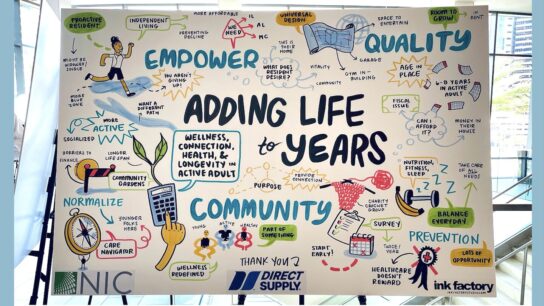SAN DIEGO — The senior living industry has an “enormous opportunity” to create a new storyline that “excites and delights” the next generation of prospective residents. And it’s not going to come about by doing things in a business as usual way.
That’s according to speakers during a session during the second day of the 2025 NIC Spring Conference.
Joe Coughlin, PhD, director of the MIT AgeLab, joined Bob Kramer, co-founder and strategic adviser to the National Investment Center for Seniors Housing & Care, to discuss how baby boomers and Gen Xers envision their future homes. They concluded that the senior living industry must shift from its perception as a last-resort alternative to an aspirational lifestyle choice.
Providers need to rethink the senior living experience for the first generation of consumers to have gone through the experience of moving their own parents into senior living communities, they said, and that experience very much has framed their desire for an “aspirational” lifestyle.
Kramer said that owners and operators must rethink the customer experience by curating experiences, encouraging and promoting a sense of independence and agency, and providing the ability for residents to make connections and have purpose.
“There is huge competition for who can define this aspirational vision of this new season of life,” Kramer said. “Our industry should be the ones to do it.”
Coughlin said that the senior living industry is at a “transformational” moment that could turn into a movement. The challenge, he said, is to create an entirely new life stage that is not already available. Referencing the Ritz-Carlton’s service standards, he said that operators should be asking residents what they want, and then delivering it.
“It’s about exciting and delighting consumers in ways they can’t anticipate,” Coughlin said. “Give me a roadmap of what I’m looking forward to — new rituals, new markers.”
The only barrier to innovation, he said, is that providers believe they already do a good job doing things the way they have for decades, and there isn’t much appetite for changing.
“We face an enormous challenge that’s also an opportunity,” Kramer said. “The storyline we have given that had enormous success over the last 30 years is not the storyline that will lead to success for the next 30 years as we serve baby boomers, Gen X and millennials.”




